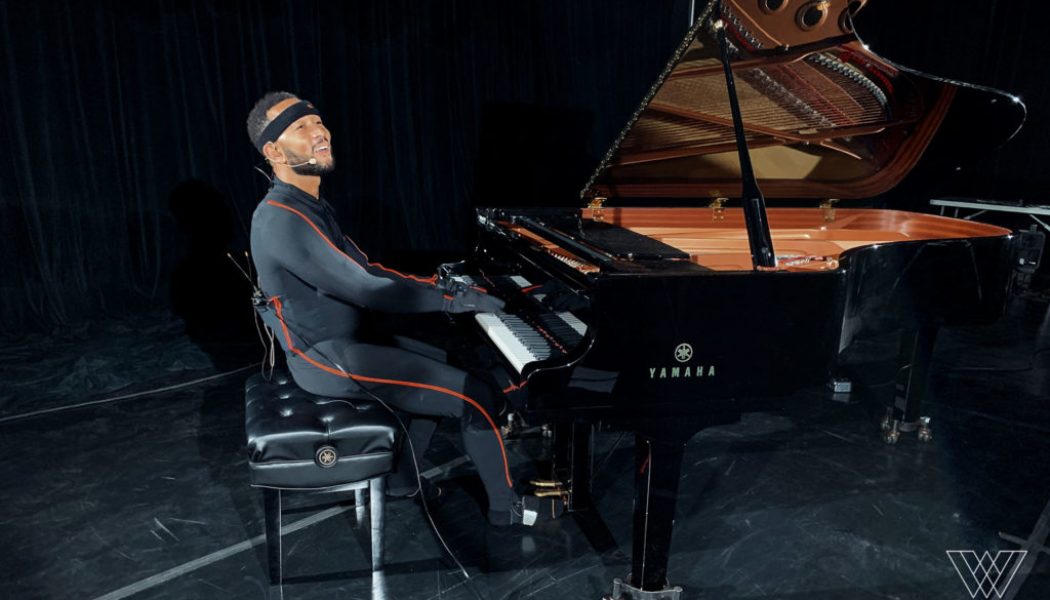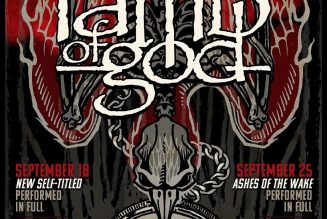
Sessions founder Tim Westergren estimates the market for virtual concerts is worth $1 billion with the potential to grow to “tens of billions” in just a few years, but can that rate of expansion continue when actual live shows resume?
At a 2007 Los Angeles music industry function, Ray Smith was pitching his new company, BE-AT.TV, to a high-ranking Live Nation executive. The business was focused on livestreaming electronic music festivals like Tomorrowland and Ultra Music Festival, and Smith says the executive’s reaction was not as he had hoped: “He was like, ‘Who the hell is going to sit at home and watch a bunch of kids partying on a laptop?'”
Thirteen years and a global pandemic later, millions of music fans worldwide are doing just that, and Smith’s newly rebranded BeApp is now facing stiff competition instead of skeptics.
Over two dozen livestreaming platforms are now fighting for attention — at least 10 of which launched in the wake of the coronavirus pandemic. The field now includes platforms founded by such industry veterans as Pandora co-founder Tim Westergren, who launched Sessions at the end of April; former AEG digital media executive John Petrocelli’s Bulldog DM, which went online in July; and former senior Sony Music executive Thomas Hesse, the CEO of Dreamstage, which debuted in August. Meanwhile, long-standing social platforms, including Fans and HouseParty, have begun hosting livestreamed concerts. Investors are lining up to get in on the action, but realists predict that, in a business sector that is already crowded, only some of those bets will pay off. There is also the question of what will happen when concerts with crowds resume.
For the moment, however, the numbers look promising. Livestreams, a term that now encompasses a variety of experiences — from at-home Instagram Live sets to high-end productions of virtual concerts — reached over 113 million U.S. internet users in the second quarter of 2020, nearly 60% of whom hadn’t engaged with the format prior to the pandemic, according to a recent report from MusicWatch. And the latest Insight report from MRC Data indicates that interest in livestreams is growing: 47% of American music consumers think it is important for the industry to offer livestream concerts, up from 36% in late March, and 44% say they are likely to stream a virtual concert in the next two weeks, up from 34% for the same period.
There’s plenty to watch. Over 44,000 global livestream event listings have been added to official Bandsintown artist pages since March 25, according to the data-driven tour and livestream aggregator. Additions spiked about one month into the pandemic, rising from about 2,000 in the final week of March to over 3,000 in the final week of April. They have tapered off since, but in August, Bandsintown found that 75% of a survey group of 450 artists with pages on its platform had performed a livestream compared with 45% in April. Over 30% are planning to do so at least once a week in the future, while 70% will increase their number of performances over the next six to 12 months.
Hesse, who launched Dreamstage on Aug. 22, thinks that concert livestreaming will become a $6 billion industry within the next three years. “It’s a new market,” he says, “but it’s an attractive market, and it’s here to stay.” Westergren has a slightly higher prediction, estimating the current value of the business at around $1 billion, with the potential to grow to the “tens of billions” within three years. He predicts that it will do to touring what ride-sharing did to the taxi industry: make the good both ubiquitous and widely accessible. “Taxis were limited in New York by medallions and artificial constraints,” he says. “You put in ride-hailing, and it shows [that] actually, a lot more people want to ride. Now everybody’s riding.” Eventually, he thinks the value of the livestreaming business will grow to five or even 10 times that of touring, which, pre-pandemic, had been projected to reach $31 billion in total revenue sales by 2023.
Livestreamer Wave, which enables artists to perform as avatars within imaginative virtual worlds, recently raised $30 million in fresh funding from backers including Scooter Braun and Superfly founder Rick Farman. The 4-year-old company has raised $40 million to date and plans to broaden its entertainment offerings, including gaming and social media.
Dreamstage has also raised funds from angel investors and venture capital firms, says Hesse, and continues to attract “enormous interest.” (He won’t specify a dollar amount.) Meanwhile, Westergren says Sessions has raised a modest early-stage investment.
Livestreaming has already come a long way since the start of the pandemic, when artists rushed to host patchy virtual performances from home on platforms like Facebook and Instagram Live. At the time, the format wasn’t properly monetized, professionalized or licensed, and there was little in terms of a discovery layer to help fans sift through the loads of content online.
“Coronavirus came too soon for livestreaming,” explains MIDiA co-founder and music industry analyst Mark Mulligan. The pandemic “happened at just the right time for things like TikTok and Zoom — things that were ready to pop — whereas livestreaming wasn’t.” As artists scrambled to pull them together, he says, “the unintended consequence is that they were educating their fan bases that livestreaming is something that’s free.”
But longtime proponents of livestreaming like Smith say the pandemic was the event that got the rest of the world to finally understand the format’s value. Livestreams eliminate the geographical barriers that might prevent many people from watching their favorite artists perform live and greatly lower economic ones: Even when ticketed, access usually costs around $10 per person and involves zero travel, parking or concession fees. Livestreams also allow artists to engage with audiences in new and promising ways — from inviting fans to vote on the setlist in real time to creating eye-popping virtual experiences not possible in the physical world.
“Since the coronavirus hit, we’ve seen consumers, press and partners get what we do in a much more nuanced way, which has been really gratifying,” says Wave founder/CEO Adam Arrigo. “The hardest part of doing something that’s futuristic is first communicating what it is and why it’s valuable.”
The challenge now is how to best monetize that value. Nearly six months in, the livestreaming landscape can still feel a bit like the Wild West, but several promising monetization options are beginning to emerge, including ticketing, brand sponsorship and microtransactions.
***
Livestreaming’s earliest adopters insist that the real money is in microtransactions during a stream: cheap purchases of virtual merchandise, like an outfit for an avatar or virtual coins that can be exchanged for perks, like sending a message to the artist. While each purchase might only cost the viewer a few bucks (or even cents), when the audience size is potentially limitless, those transactions can quickly add up.
For years, microtransactions have been a central revenue stream for the music business in Asia. They consistently account for around 70% of the revenue generated by Tencent Music Entertainment, which owns China’s three major streaming services, according to earnings reports dating back to 2018. The concept is also borrowed from the gaming industry, where free games like Fortnite offer virtual avatar “skins” (outfits) and other items for purchase.
Mulligan contends fans are willing to buy virtual merchandise for the same reason they buy tour T-shirts and collectible vinyl. “If you’ve got virtual gifts that could fill your profile page with badges of your favorite artists and those sort of things, it immediately says who you are,” he says. “It brings back that way to identify yourself through music that’s woefully lacking at the moment.”
Platforms are getting creative with those options: During John Legend’s Wave livestream in June, viewers could pay to throw a virtual rose at him onstage. With Sessions, viewers can buy “love” — heart-shaped coins that can be exchanged to send emoticons like flowers or lightning bolts in the chat box during the event — for as little as $5 for 423 coins, with the majority of emoticons costing between one and 1,000 coins each. Westergren says that revenue for artists on Sessions, who have included Ally Brooke and Icona Pop, comes primarily from microtransactions — of which the platform takes a 30% cut — with professional artists raking in between $5,000 and $20,000 per hourlong show.
Sessions is also among a growing number of platforms that let artists charge for access to livestreams. Dreamstage also uses a pay-per-view business model. Tickets are priced $15 to $30, with artists taking between 70% to 80% of that revenue, and in some cases, an advance. Some shows also offer VIP passes with added benefits, like exclusive merchandise and virtual meet-and-greets.
Hesse believes that the high quality of Dreamstage’s livestreams will lure ticket buyers. While the platform’s shows can be viewed on mobile and desktop devices, he says they are produced to look great on living room TV screens. “We think people want to watch that experience on a TV with a lean-back, living room setup and a crisp, beautiful, big picture,” he says, estimating that without touring expenses like flights and hotels, tickets will bring in “between five and 15 times the profit that you can make from an in-person show pre-COVID-19.”
In June, BTS’ Bang Bang Con livestream illustrated that possibility, generating between $19 million and $26 million in ticket sales, with tickets priced at $26 for BTS Army fan club members and $35 for everyone else.
Meanwhile, BeApp is seeing success with a sponsorship model. The app teamed with Coca-Cola for its May launch, livestreaming Coke Studio Sessions performances by 100 musical artists including Katy Perry and DJ Khaled over the next 60 days. All of the shows are free, and fans earn points for viewing. These can be redeemed for physical merchandise and other perks, which Smith says drives fan engagement. He adds that BeApp has handed out over $4.5 million in payments to artists. “There is no one in the market that’s writing the checks that we are,” he claims.
***
While those numbers are enticing for big-name stars, it can be much more difficult for emerging acts to attract audiences on livestreams, let alone charge entry for those events — especially in an oversaturated market. Bandsintown reports that livestreams have been mainly used by smaller artists with 10,000 or fewer Bandsintown followers, which accounted for 74% of such events that the platform tracked in April. In the same report, 80% of surveyed consumers said they were willing to pay for livestreams, up 10% from Bandsintown’s previous poll in April. As such, some companies are focusing on helping developing acts design and monetize their livestreams, too.
On Sessions, emerging acts aren’t just part of the bigger picture — they’re the reason the platform exists. Westergren says he launched Sessions with the goal to create a “musicians’ middle class,” which had also been his intention at Pandora. “In the end, we didn’t fundamentally change the economic condition for working musicians,” he says. “That was unfinished business for me.”
Artists apply to join Sessions through a public online form. The platform then uses an analytics-based marketing growth engine to digitally advertise, free of charge, each artist’s first livestream performance to music listeners who are most likely to be interested.
Westergren began by bringing in 150 musicians who were “utterly unknown,” he says. “A handful are now making really good money” — between $200 and $700 an hour — “and it’s because we could afford to bring them this audience starter kit.” In a given week, 500 artists — most recently including Jake Miller and K-pop singer Kevin Woo — are now active on the platform.
Platforms that launched with top-tier talent say they also plan to support developing acts in the long term. Since July, any aspiring artist has been able to livestream on BeApp, and Smith says the company is giving away a total of $1,000 per week in payments to artists with the highest-performing streams. (Rankings are based on streaming frequency, audience size and how long the average viewer spends watching an act.) First place wins $500; second place, $250; third place, $100, and so on. At Wave, Arrigo says the company has a similar vision to “turn this into a sustainable ecosystem” where “if you’re a bedroom DJ or indie band, you can plug into our network and make a living.”
There is a small but promising market for those artists: According to the MusicWatch report, 14% of livestream viewers are watching emerging artists or ones they were previously unaware of. “I was actually encouraged by that,” says MusicWatch managing partner Russ Crupnick. “It’s a glass-half-full kind of thing.” He says that livestreaming superstars could add opening acts to their virtual performances, just as they do with in-person shows. In July, for example, Hand Habits (the indie-rock solo project of Meg Duffy) opened the second of Angel Olsen’s “Cosmic Stream” shows for the platform Noonchorus, and the two duetted on Tom Petty’s “Walls.”
If just a handful of those 14% of viewers monetize their experience by buying merchandise or even checking out an artist’s music on Spotify, he adds, it could go a long way. “It doesn’t have to be everybody,” says Crupnick. “It just has to be enough to keep the lights on.”
***
While the current data on livestreaming is cause for optimism, significant challenges remain. In a market packed with platforms and artists utilizing the technology, discovery can seem near-impossible.
“I don’t get the sense that livestreamers are actively searching these things out the same way they look for things on Netflix,” says Crupnick. “In my household, somewhere around dinner time, we’re going, ‘OK, what are we watching tonight?’ You need that in the livestreaming space.”
Former Beatport CEO Matthew Adell is trying to do exactly that with his new company, On Now, which provides a universal guide to livestreams. Users can add upcoming streams to a personal watch list and receive email reminders when events are about to start. Some platforms, like BeApp, now have their own reminder features built into the app.
The billion-dollar question, of course, is whether fans will continue to livestream shows once in-person concerts resume. Research is promising: An April report from Bandsintown found that 74% of 7,000 music fans surveyed plan to watch such performances on a regular basis after live shows return. A study the same month from United Talent Agency made a similar conclusion: Of concertgoers who watched a livestream during lockdown, seven out of 10 said they will continue to watch such performances, free or paid, once public-performance restrictions are lifted.
Even if livestreaming’s biggest proponents are right and its business potential explodes, the music industry may ultimately have to decide whether livestreaming erodes the revenue generated by in-person shows or whether it can become its own category that doesn’t cannibalize physical ticket sales.
“The reality is that the people who [are] the heaviest livestreamers are the ones who went to the most shows before,” notes Crupnick. “So I wonder if we’re going to lose a third or 40% of the casual people who will just go back to doing whatever they used to do and a lot of the people who used to do this live go back to the live experience.”
At the very least, many executives believe there will be a market for livestreams among the same music fans who faced geographical and economic barriers to attending live shows before the pandemic. Dreamstage is already partnering with venues to stream no-audience concerts from their stages, such as the The Conrad Prebys Performing Arts Center in La Jolla, Calif., and plans to use those partnerships to livestream in-person shows in the future, with the venues raking in the lion’s share of ticket sales.
But futurists like Arrigo think that, especially among younger generations, the very definition of a concert will soon include both physical and virtual events. It’s a shift he saw coming even before the pandemic and which has only been accelerated in the wake of worldwide lockdowns.
“One of my favorite comments from the Galantis show in February read, ‘This was the first concert I ever attended,'” he says. “The market for concerts is so much bigger than what it was even pre-pandemic. And these technologies can enable lowering that barrier to entry, but also [to] new experiences that people haven’t had.”









